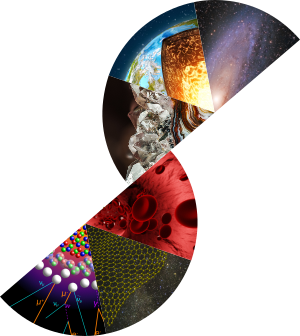Nuclear Magnetic Resonance (NMR) spectroscopy is an essential technique in chemical science, particularly in organic synthesis. NMR spectroscopy is non-destructive and quantitative and gives information about chemical structures. Moreover, it permits the real-time monitoring of chemical changes [1], and gives information on the reaction kinetics and product structure, and thus insights into reaction mechanisms. Diffusion NMR is a method for the analysis of complex mixtures, which makes it possible to separate spectra based on the translational diffusion coefficient of the molecules, and in such a way to retrieve information on individual components [2]. It has a high potential for reaction monitoring, and the recent development of DOSY methods that are applicable in continuous flow is also particularly relevant for this application.
The present study aims at exploiting diffusion NMR to monitor a so-called ‘click-type' reaction [3]. The reaction is interesting from both the synthetic point of view since it is an easy and fast way to create complex molecules by joining two small components. It also provides a good test case for DOSY NMR, as the distinct diffusion behavior of reactants and a product may result in separable spectra. The reaction was carried out in an NMR tube, and the DOSY method developed in our team [4] was used to obtain high-quality NMR data to be further processed. The diffusion profiles over the whole reaction time were obtained for reactants and a product. Partial separation of the spectra for the different reaction components was achieved based on the DOSY data. In the next steps, the reaction will be monitored using flow NMR, with the final purpose of integrating DOSY methods, an in-line analytical tool [5], for reaction monitoring in flow synthesis.
References
[1] Ben-Tal, Y. et al. Mechanistic analysis by NMR spectroscopy: A users guide. Prog. Nucl. Magn. Reson. Spectrosc. 129, 28– 106 (2022).
[2] Dumez, J.-N. NMR methods for the analysis of mixtures. Chem. Commun. 58, 13855–13872 (2022).
[3] Hein, C. D., Liu, X.-M. & Wang, D. Click Chemistry, a Powerful Tool for Pharmaceutical Sciences. Pharm. Res. 25, 2216–2230 (2008).
[4] Marchand, A., Mishra, R., Bernard, A. & Dumez, J.-N. Online Reaction Monitoring with Fast and Flow-Compatible Diffusion NMR Spectroscopy. Chem. – Eur. J. 28, e202201175 (2022).
[5] Rodriguez-Zubiri, M. & Felpin, F.-X. Analytical Tools Integrated in Continuous-Flow Reactors: Which One for What? Org. Process Res. Dev. 26, 1766–1793 (2022).

 PDF version
PDF version
